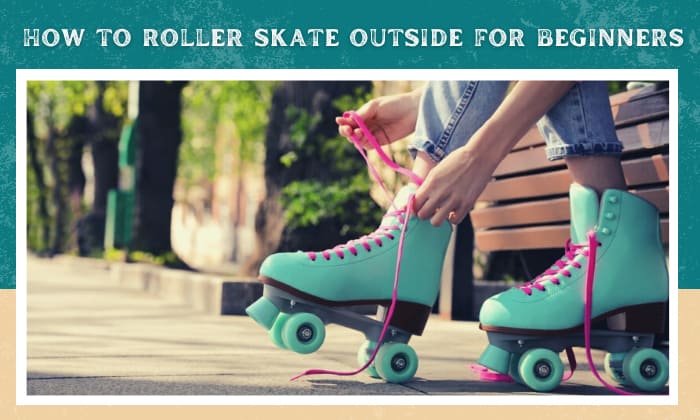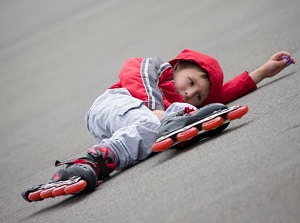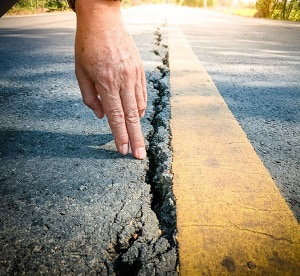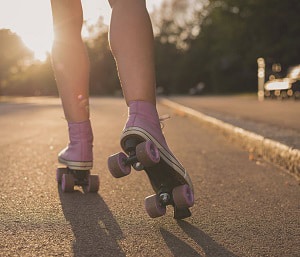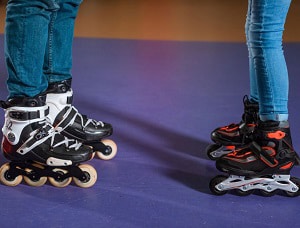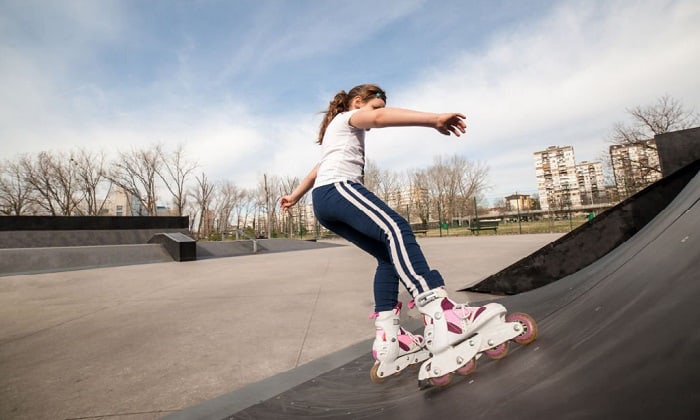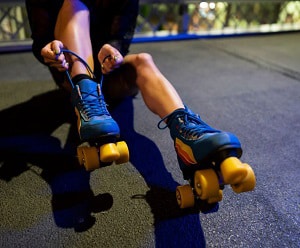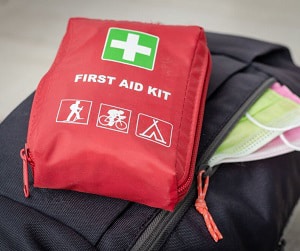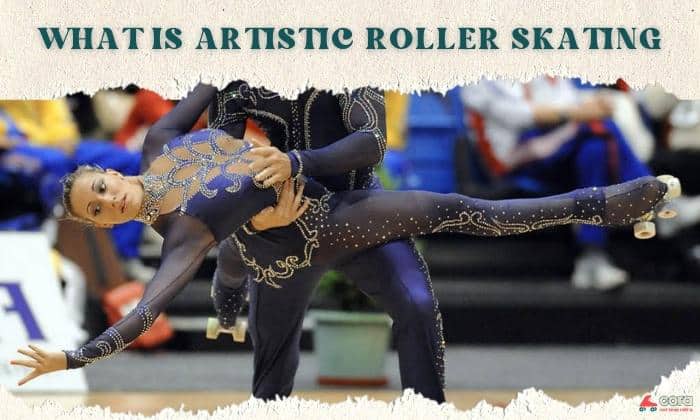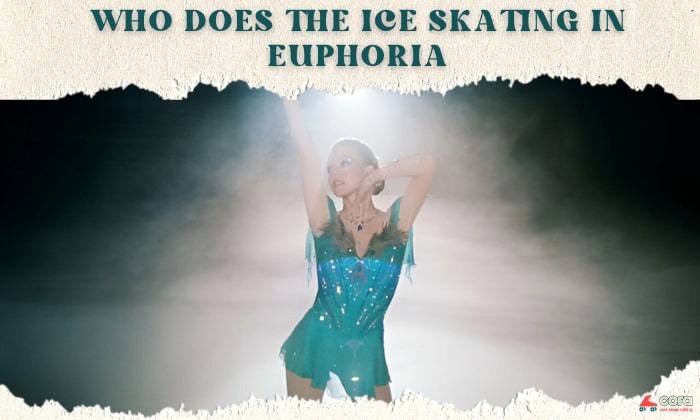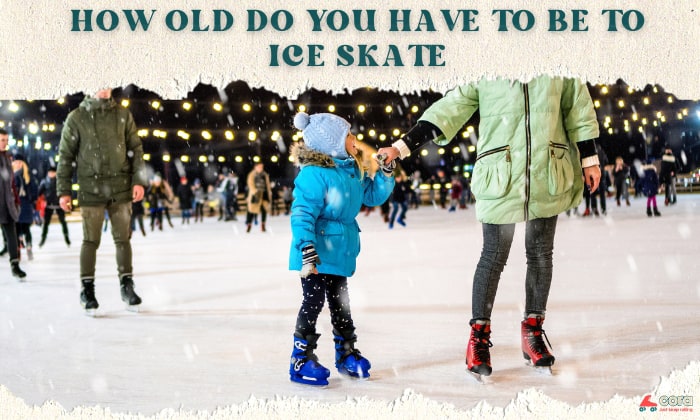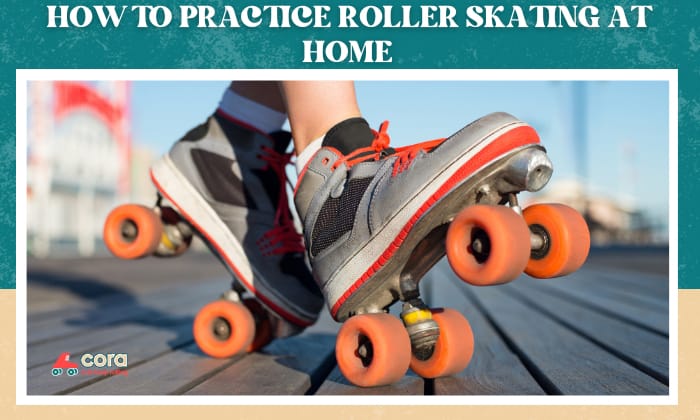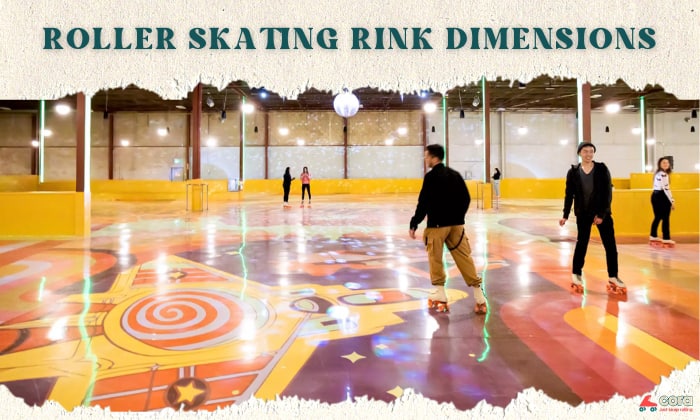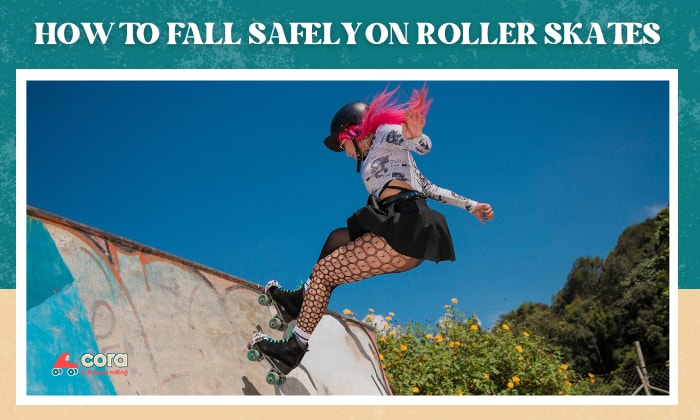Skating inside and outside is drastically different. Therefore, moving from one to the other can be difficult. But there are steps that you can follow to ensure a smooth transition.
In this blog post, we will provide all the essential information on how to roller skate outside for beginners, which includes beginner roller skate tips. So, read until the very end to get a complete understanding!
Page Contents
3 Tips to Roller Skate Outdoors
Tip 1: Practice falling safely
“Falling” and “safely” do not sound right together. But it is possible!
Here are a few things to take note of:
- Tighten your core to get better control of your movements
- Bend your knees and lower your stance so you fall a shorter distance
- Do not break your fall with your hands, no matter how tempting it seems – you can break your wrist.
- If you fall on your knees, keep sliding forward to minimize the force of impact – this requires knee pads. If you fall backwards, try to lean to one side so slightly you’ll fall on one of your butt cheeks and parts of your thigh instead of your tailbone.
Tip 2: Learn to deal with cracks
- On particularly uneven terrain, simply step over the cracks as you skate. Alternatively, more experienced skaters can try the stagger foot stance to get over the cracks. That said, only attempt this if you’ve mastered the technique.
- On smoother surfaces, you can roll over it with a bit of speed. If you go too slowly, your wheels will get stumped in the cracks and you will topple over.
Tip 3: Learn to go up & down curbs
- Going up curbs: Approach it slowly and roll parallel to it. Bend your knees, lower your stance, and step one foot up the curb first. While doing this, your weight should be on the foot that is on the curb. Keep rolling for a bit like this, then bring the foot below up onto the curb as well.
- Going down curbs: Roll parallel to the curb and slowly bend your knees. Step one foot down the street and keep your weight on the foot that is on the curb. Gradually shift your center to the foot off the curb and push off to bring your other foot down too.
Safety Tip: Avoid practicing on a busy street. Go somewhere empty and spacious!
What You Need to Prepare Before Starting to Roller Skate Outside
In order to start roller skating outdoors, you must get the appropriate gear, locate a good spot to skate, and be comfortable with the basics.
1. Get the appropriate gear
First, you must get yourself outdoor roller skate wheels. You cannot use the same ones that you use indoors because they are not built for surfaces outside. Your skate wheels need to be soft to help you absorb impact and roll smoothly on a track outdoors.
You also need the basic protective wear: a helmet, wrist guards, elbow pads, and knee pads. Hip pads and mouth guards are extras that you can also consider having. Proper roller skating outfits are necessary too.
Note: Find more information about what to wear in our other blog post: What to Wear Roller Skating & What Not To Wear
2. Find a suitable place to skate
“Outdoors” is a broad description, and it can be slightly difficult for new skaters to know exactly where to skate. But do not worry! It is not rocket science. The key is to find a safe place.
Here is how you can determine if a space is good for roller skating: check that it is:
- Smooth (Free of obstacles like large rocks or fallen twigs)
- Spacious (Not cluttered and crowded)
- Away from traffic
You will have to spare time to do some scouting in public places. But rest assured that it will be worth it. A suitable skating place is essential to good skating experiences.
The park and empty parking areas offer some great options. Trails and sidewalks can sometimes work as well.
It is best to find one spot that meets the three criteria above and continues to do so for a while. This means you should not change your practice spot often, as it’ll be better to practice on the same surface over and over to get used to the outdoors.
Another thing you should avoid is wet surfaces, which can be slippery. Plus, if your roller skates encounter moisture, their bearing can rust and, thus, interfere with the spinning of the wheels, rendering them useless.
Note: If you are uncertain about where to start scouring, consider jumping online for a quick Google search with the keywords “Where to roller skate outside near me.”
3. Be comfortable with the basics
In order to transition from indoor skating to skating outdoors, you need to have mastered the basics. This goes for kids and adults alike!
Roller skating on concrete or on asphalt is tough enough as is. You do not want to add to it by not knowing how to balance, change directions, or stop/brake. Controlling your speed is also one of the basic skills to know. How fast you can go while roller skating outdoors depends on your skills, but 2 to 5 mph is recommended for beginners.
There is no secret solution to this. Just remember: Practice makes perfect! If you are struggling, look up skating tutorials, join a roller skating club, or consider enrolling in a roller skating class. You can even find a private trainer.
Is It Easy as Skating Inside?
The truth is: skating outside presents a lot more challenges than skating inside. For one thing, the surfaces outdoors are not always the best for skating — more often than not, they’re rough, bumpy, and can contain cracks. As such, you’re more prone to falling, and once you do, the injuries can be more serious if you don’t have the proper protective gear.
For another, skating outside means you’re more likely to run into more obstacles, such as objects left haphazardly on the ground, people, running traffic, etc. You need to be mentally prepared that you’ll eventually run into unexpected situations and know how to react accordingly.
So, if you’re wondering, “Is it hard to learn how to roller skate outside?” the answer is yes.
Roller Skating Tips & Tricks
1. Be mindful of your posture
When you learn roller skating, you will need to pay attention to your posture. It can make or break all roller skating tricks and techniques!
As skating beginners, it can be tough to remember at first but rest assured that with practice your body will automatically get into position. Here is a checklist you should keep in mind:
- Your back should be straight,
- Your knees should be bent
- Your feet should be spaced shoulder-width apart
- Your arms should be relaxed at your sides.
2. Lace your roller skates properly
This does not pop up on most people’s minds when it comes to tips for roller skating, but it actually makes a lot of difference.
If your roller skates are properly laced up, the laces can come loose, tangle into your wheels, and cause you to trip over.
Before you start rolling on any surface, make an effort to check that your skates are laced up the right way. They should be tight and secure. Your feet should feel snuggled but not suffocated. It should not have too much room to slide back and forth either.
3. Have an emergency kit ready
While skating outside, it is not a bad idea to carry an emergency kit with you. You can take just a small skate bag and fill it with:
- A skate tool
- Spare axle nuts
- A water bottle
- Snacks
4. Remember to clean your roller skates afterward
When you skate outdoors, your wheels will pick up dirt, debris, and other kinds of filth. They can get lodged in the bearings and cause them to wear out.
So, it is necessary to clean your roller skates right after you are done using them. Make sure that you give them enough time to dry as well. You do not want the bearings to rust!
Conclusion
Now that you have finished reading this comprehensive guide on how to roller skate outside for beginners, you have all the information you need to start! Put everything you have gotten from us today into action. If you do not have protective gear and the correct roller skates yet, you can take it from there.
Let us know if there is anything else that we can help with. Simply leave a comment down below, and we will get back to you!

Harrison is a skating enthusiast who picked up the sport during her student exchange years in Canada. She has been a skating coach for children and teens for 3 years and now holds classes as a freelancer. Harrison entwines her experience leading skating classes in the content published on Cora to help readers fall in love with skating, just like she did.


